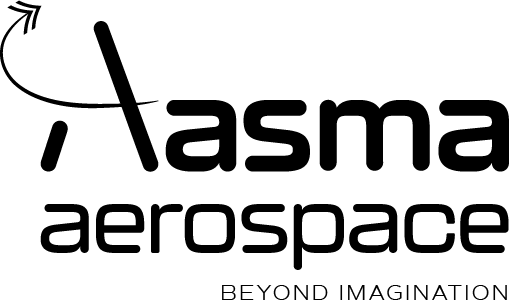Choosing the Right Parts for Building Your Own Drone: Motors, Propellers, Batteries, ESCs, and Connectors
Selecting each component for your own drone involves balancing thrust, efficiency, weight, and reliability. Motors must match your prop size and flight style via KV and torque specs; propellers are chosen for diameter, pitch, blade count, and material; batteries balance capacity, voltage, energy density, and discharge rate; ESCs require correct voltage, current rating, and protocol support; and connectors must handle peak currents safely. An iterative testing loop—using thrust stands or bench measurements—validates each choice against your mission goals.
Motor Selection
Understanding KV, Torque, and Stator Size
A motor’s KV (RPM per volt) directly trades speed for torque. For racing or freestyle builds with small props (≤3″), choose high‑KV (2 500–4 000 KV) to spin props fast on 4 S packs
For photography or heavy‑lift drones using larger props (6″+), opt for low‑KV (450–1 050 KV) motors that deliver high torque at lower RPM, improving hover efficiency
Stator size (expressed as diameter×height) dictates torque capability and heat tolerance: larger stators handle higher currents and sustain torque without overheating, at the expense of extra weight
Matching Motor to Propeller and Frame
Use the formula
Desired RPM ≈ KV×Battery Voltage/ 2
to ballpark motor KV for your prop size and voltage Ensure sufficient frame clearance for your prop diameter, and verify that the motor’s max current rating exceeds your prop’s stall current at full throttle.
Propeller Selection
Diameter and Pitch
- Diameter controls max thrust: larger props displace more air, boosting static thrust—but add drag and weight.
- Pitch determines forward “bite”: higher pitch increases thrust per revolution but demands more torque and power
Blade Count and Material
- 2‑blade designs minimize drag and maximize efficiency in cruise.
- 3‑blade offers balanced thrust and smoother handling.
- 4+ blades deliver peak static thrust (useful for heavy-lift or filming rigs) at reduced efficiency
Carbon‑fiber props are stiff and lightweight, yielding better efficiency and durability than plastic—especially for diameters ≥6″
Battery Selection
Capacity, Voltage & Energy Density
- Higher mAh boosts flight time roughly linearly, but each extra gram increases thrust requirements. Battery mass often comprises ~40–50% of your drone’s all-up weight for balanced performance .
- Pack voltage (series cell count) must match motor KV so you operate near optimal RPM without overheating .
- Energy density (Wh/kg) ranges from ~140 to 265 Wh/kg in LiPo cells; premium cells at the upper end extend flight time but cost more .
C‑Rating & Current Draw
The C rating indicates max continuous discharge:
Max Current = Capacity (Ah) × C‑Rating
Select a pack whose max current exceeds your total motor draw by ≥20% to avoid voltage sag and overheating
ESC and Connectors
ESC Voltage & Current Ratings
Match the ESC’s cell‑count rating to your battery (e.g., 6 S battery → ESC rated ≥6 S) and pick a current rating ≥120% of your motor’s max draw
Digital protocols like DShot600/1200 reduce latency and remove the need for calibration.
Wiring & Connectors
Wire gauge: silicone, multi‑strand wires sized so that
Current (A)≈ 25 ×CSA (mm²) avoid overheating
Battery connectors: XT60 (≤60 A) or XT90 (≤90 A) are standard; choose based on your pack’s max current and install quality solder joints
Adapters (e.g., XT60‑to‑XT90) add flexibility but introduce extra resistance—use only when necessary
Integration & Testing
Propulsion Stand Validation
Once parts are matched on paper, validate with a thrust stand to measure actual thrust, torque, RPM, and power draw at hover and peak loads
Compute real mechanical efficiency (N/W) to fine‑tune motor‑prop combinations.
Iterative Design Loop
Employ an iterative cycle: define mission, size components via core equations, bench test, compare data, then swap parts to improve efficiency or reduce weight. Repeat until performance aligns with your flight‑time, payload, and agility goals
Choosing the right motor, propeller, battery, ESC, and connectors—and validating them through testing—is the foundation of a successful drone build. By following structured selection criteria and empirically verifying each choice, you’ll assemble a UAV tailored precisely to your mission.
Conclusion:
Building your own drone is a rewarding process that demands careful selection of motors, propellers, batteries, ESCs, and connectors to balance thrust, efficiency, and reliability. At Aasma Aerospace, we specialize in helping enthusiasts and professionals alike build your own drone with components perfectly matched to your mission—whether it’s high-speed racing, cinematic filming, or heavy-lift operations. Using our expertise and testing tools, Aasma Aerospace ensures that when you build your own drone, you choose the right KV motors, propellers sized for optimal thrust, batteries with ideal energy density, and ESCs that handle peak loads safely. Partner with Aasma Aerospace to confidently build your own drone with industry-leading precision and performance.

